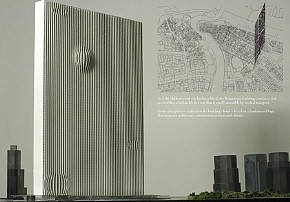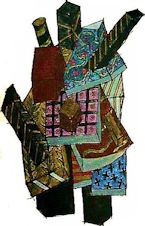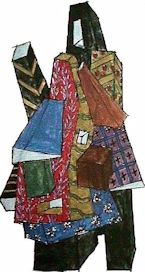thinking
an older Arab settlement flipped up.

Would the Libeskind collage make for an interesting building section?
twice
The raspberries bear fruit twice a year--in a few weeks and again in September.
thinking
I know I read some of Krier's interviews with Speer [sic] sometime in the early 1980s, but I can't remember where they were published, I'm thinking maybe in Eisenman's Skyline. And before that there was Krier's "Vorwarts, Kameraden, Wir Mussen Zuruck" in (Eisenman's) Oppositions 24 (1981).
thinking
On several occasions, I've 'joked' here at archinect about drawing via talking to the computer--although I'm quite serious about the prospect. Watching your fingers move during the video made me think of sign language, which is also a form of 'speaking.' Is Primate set to evolve into a (nice, loosely flexible) de-sign language where specific gestures come to 'mean' specific formal reactions? Now I'm thinking of the movements of a conductor in front of an orchestra.
twice
I like my raspberry bushes because they bear fruit twice a year, mid-spring and mid-autumn (like right now). And although still seasonal in their development, there's also this kind of double-helix thing about it.
thinking
The sound of rain in the woods is quite loud, and found myself literally thinking out loud, "How did tammuz x put it, "The what of remedial what?"
thinking
I posted the quotation here as an example of an "out of the ordinary" Koolhaas text. Koolhaas and Orbist interviewed Venturi and Scott Brown in 2000 (at Geneva) and this interview along with the 2001 Koolhaas text probably provide a fuller picture of Koolhaas's thinking in this case.
thinking
I'm not trying to win anything. I just keep on posting stuff to see what your two-dimensional thinking will come up with next.
Actually, I did travel across the universe exactly as you describe but I ultimately found that where I started didn't exist anymore. So I walked backwards upside down and upon my return I found I was dyslexic but looked somewhat younger. Hypnosis has since fixed the dyslexia, but somedays I actually look 20 years younger than I am. And, in all honesty, when people see me...
| |
| |
...with my three-year older brother, they assume he is my father. See, he also traveled across the universe, but he went west and then south.
In concert, we like to sing "Rococo your boat, life is but a dream."
thinking
Now I'm thinking of starting a whole new set of buildings with the distorted 'cubes' also rotated but stacked side-by-side.
thinking
It also got me thinking of an enigmatic set of ten 'buildings' within Hejduk's second to last book, Adjusting Foundations (1995), here's two:
 
These buildings are not labeled (as to what they might be), nor are they even listed in the book's table of contents. Stacks of extra fancy hat boxes?!? A presence of architectural presents?!?
thinking
Yes, in one-dimensional thinking, ability and talent are the same thing. Yet, in three-dimensional thinking, ability is two-dimensional and talent is three dimensional.
Miles, don't worry, I'm sure you're extremely talented in a one-dimensional world.
twice
Eusebius had met Constantine at least twice, and perhaps even met Helena if she was at the Nicene Council (if not also when/if she was in Palestine).
thinking
This passage seems useful in terms of thinking about a novel whose scenes and complications occur within the realm of labyrinthine architectural history, or is it within the realm of architecturally labyrinthine history?
thinking
After thinking about it, I've come to realize that I like that there are "docents to explain how the form of the buIlding relates to the local rivers and streams" because the architects' conceptual intent will therefore not fade into oblivion.
thinking
"Stalin's Russia was a nightmare of double standards and double thinking, when the simple aspirations of ordinary people could amount to crimes against the state."
Alexei Tarkhanov & Sergei Kavtaradze, Stalinist Architecture, 1992.
|


